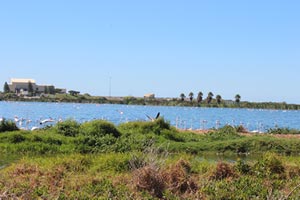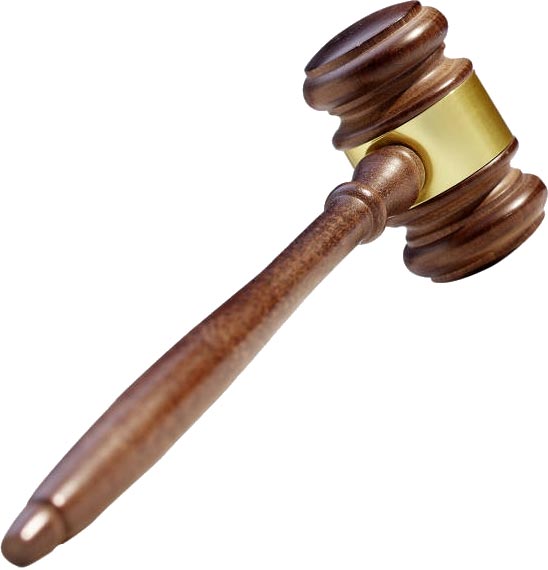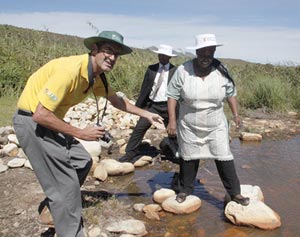Working for Wetlands
Introduction and background
Working for Wetlands is a joint initiative of the Departments of Environmental Affairs (DEA), Water and Sanitation (DWS) previously known as Water Affairs (DWA) and Agriculture, Forestry and Fisheries (DAFF). This illustration of cooperative governance and partnerships comes to life through projects that focus on the rehabilitation, wise use and protection of wetlands in a manner that maximises employment creation, supports small businesses and transfers relevant and marketable skills to beneficiaries.
Wetlands are our natural assets and natural infrastructure able to provide a range of products, functions and services, free of charge. Despite being high-value ecosystems they make up only a small fraction of the country. Once considered valueless wastelands that needed to be converted to other uses in order to improve their usefulness to people, many governments around the world, including South Africa, were still providing farmers with incentives to convert their wetlands for agriculture as recently as the 1970s.
These activities severely affected and dramatically altered South Africa’s landscapes over the past few centuries. Studies in several areas have suggested that between 35% and 60% of South Africa’s wetlands have already been lost or severely degraded.
A pivotal response by the government to this state of affairs was the establishment in 2002 of a national wetland rehabilitation programme, known as Working for Wetlands. The decision to create such a programme came about through the convergence of several driving forces. It drew on objectives in environmental, biodiversity, water and agriculture policies, and capitalised on the growing recognition that wetland degradation is not necessarily permanent, and that it is possible to reinstate at least some ecosystem services through rehabilitation. A foundation was provided for the creation of the programme, in the form of another pioneering government initiative.
Since 1996, the Working for Water programme had been engaged in removing thirsty invasive alien plants that posed a threat to the country’s water security, agricultural productivity and biodiversity. The non-governmental Mondi Wetlands Project recognised that the labour-intensive model pioneered by Working for Water would be equally suited to the activities involved in rehabilitating wetlands, and lobbied government to begin experimenting in this direction.
Perhaps the most significant factor enabling the emergence of Working for Wetlands was the availability of government funds earmarked for employment creation and poverty reduction, through the Expanded Public Works Programme (EPWP). This government-wide initiative was set up to draw significant numbers of unemployed people into the productive sector of the economy, gaining skills while they work and increasing their capacity to earn income. The ability to turn wetland rehabilitation into a labour-intensive process unlocked a magnitude of financial resources and political support that was previously inconceivable to cash-strapped government departments responsible for biodiversity conservation and natural resource management.
Thus, Working for Wetlands pursues its mandate of wetland rehabilitation and wise use in a manner that maximises employment creation, supports small emerging businesses, and transfers skills to its beneficiaries. In line with EPWP norms, the programme targets those groups most excluded from the mainstream economy, with particular emphasis on women, youth and people with disabilities.
Objectives
Working for Wetlands is based on key interlinked concepts that ensure effective and sustainable wetland rehabilitation:
- Wetland Protection, Wise Use & Rehabilitation
- Skills and Capacity Development
- Co-operative Governance & Partnerships
- Knowledge Sharing
- Communication, Education & Public Awareness
Combining environmental and social outcomes, Working for Wetlands weaves together the wise use of wetlands with employment creation and poverty alleviation. Using the rehabilitation of wetlands as a vehicle to achieve these outcomes, the programme follows an approach that centres on cooperative government and partnership creation with landowners, communities, civil society and the private sector.
Legislative framework
The South African government policy reflects the recognition that, in order to be truly effective, strategies for wetland conservation need to include a combination of proactive measures for maintaining healthy wetlands, together with actions to reverse past degradation. This latter aspect forms the core business of a government-led wetlands programme.
Section 24 of the Constitution of South Africa states that, ‘everyone has the right to an environment that is not harmful to their health or well-being; and to have the environment protected, for the benefit of present and future generations, through reasonable legislative and other measures that prevent pollution and ecological degradation; promote conservation; and secure ecologically sustainable development and use of natural resources while promoting justifiable economic and social development’.
- The 1984 Conservation of Agricultural Resources Act became the first substantial legal instrument for protecting wetlands and remains in force to this day.
- Principles such as the ‘duty of care’, enshrined in section 28 of the National Environmental Management Act, require that landowners must take reasonable measures to prevent, minimise and rectify environmental degradation on their properties. Working for Wetlands offers technical expertise to landowners and collaborates with local partners to set rehabilitation objectives with the intention of improving the integrity and functioning of ecosystems. Rehabilitation measures address both the causes and effects of degradation.
- The National Environmental Management Act 107 of 1998 (NEMA) the National Water Act 36 of 1998 (NWA) and the environmental provisions of the Mineral and Petroleum Resources Development Act 28 of 2002 (MPRDA) ensure that urban and commercial developments do not affect or alter the natural state of wetlands.
Projects
- Improved livelihoods,
- Protection of agricultural resources,
- Enhanced biodiversity,
- Cleaner water,
- Reduced impacts from flooding and
- Sustained base-flows in rivers.
- Diminished water security,
- Desertification,
- Reduced food security,
- Reduction in biodiversity,
- Lost livelihoods and
- Increased vulnerability to natural disasters, especially floods and droughts. With climate change predicted to change rainfall patterns, our wetlands will play a more important role than ever before in reducing the impacts of floods and droughts.
- Building concrete, earthen or gabion structures to arrest erosion, trap sediment and re-saturate drained wetland areas;
- Plugging artificial drainage channels;
- Addressing other causes of degradation, such as poor agricultural practices and invasive alien plants;
- Plant propagation, re-vegetation and bio-engineering;
- Building boardwalks, bird hides and interpretive signboards to enhance the recreational, tourism and educational value of rehabilitated wetlands;
- Concluding contractual agreements with landowners to secure the rehabilitation work, prevent further degradation of wetlands and influence land use practices; and
- Providing community members with part-time employment and training to monitor completed rehabilitation once the work is completed.
- Social aspects: Who uses the wetlands and for what? How does this contribute to healthy livelihoods?
- Biophysical aspects: What constitutes a healthy a wetland and why?
- Landuse practices: What are our current land use practices and how do they affect wetland health? How can these be improved?
- Governance aspects: What are the current governance practices and how can these be supported?
- Monitoring: What are the indicators we need to track to understand social and biophysical health related to the wetlands?
- Reporting and action: Who do we report to and how? What is the purpose of the reporting and what are the actions that need to be taken?
Performance indicators
- Number of person days
- Number of jobs created
- Number of training days
- Number of wetlands rehabilitated
- Number gabion structures
- Number of concrete structures
- Number earthern structures
- Number of earth works
- Number of re-vegetation
- Number of hectares of cleared invasive plants
Achievements
- Heavy rains, floods and inaccessible roads, and temperatures reaching above 40 degrees Celsius,
- Dangerous animals such as venomous snakes and wild life within Parks,
- Access to privately owned land,
- Buy-in of communities, whether in private or communal land,
- Staff accommodation and safe-keeping of rehabilitation material in distant areas.





